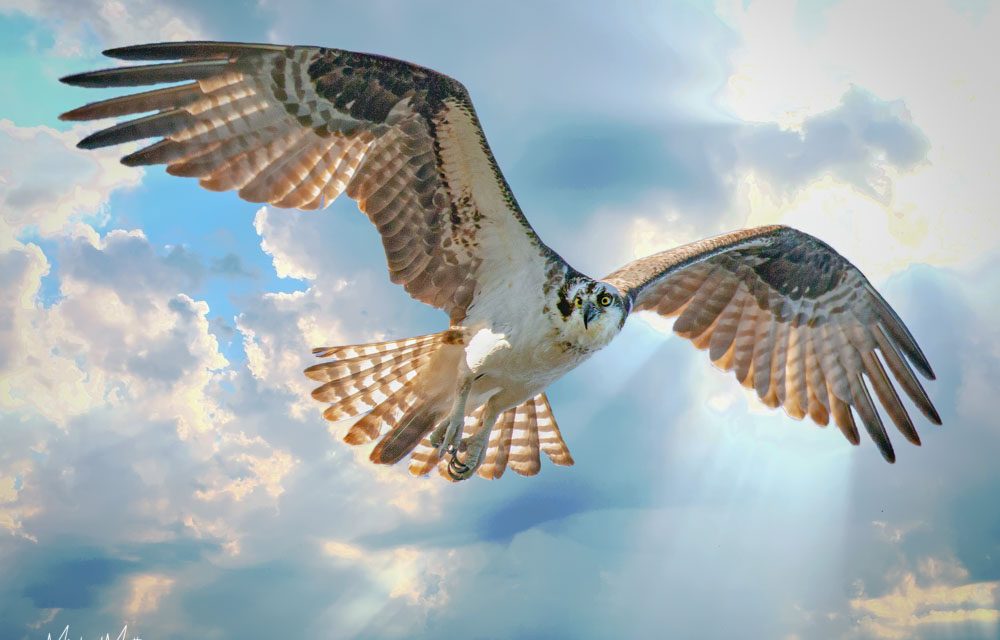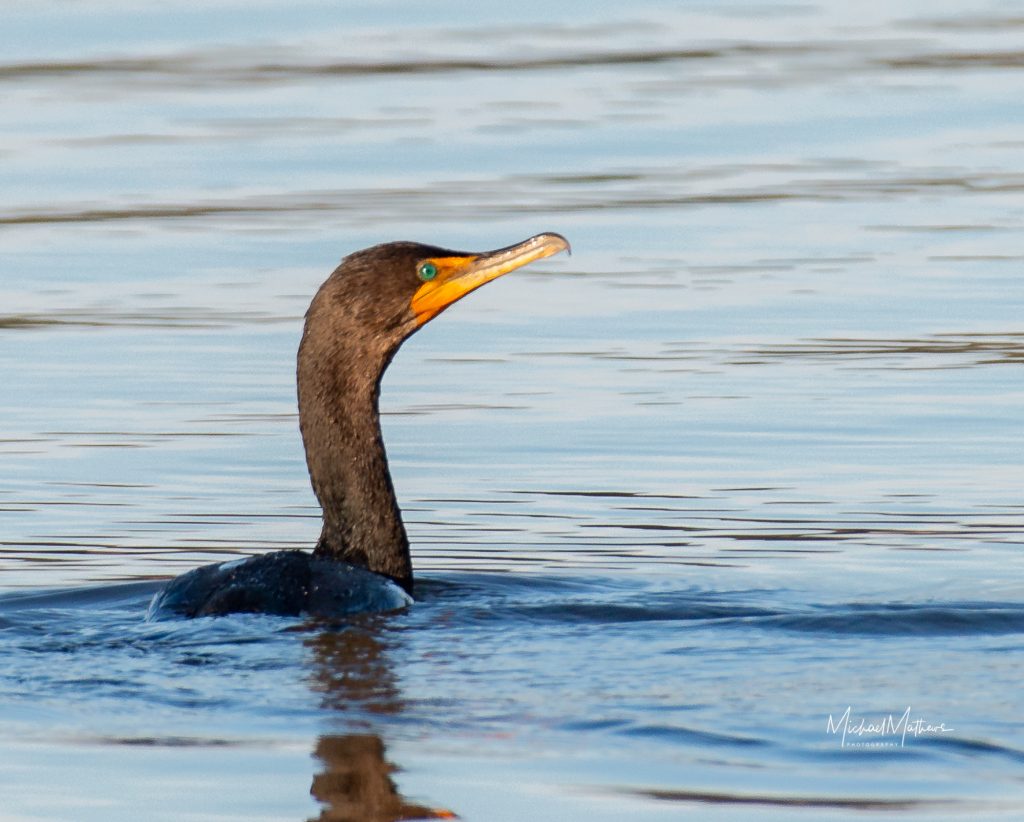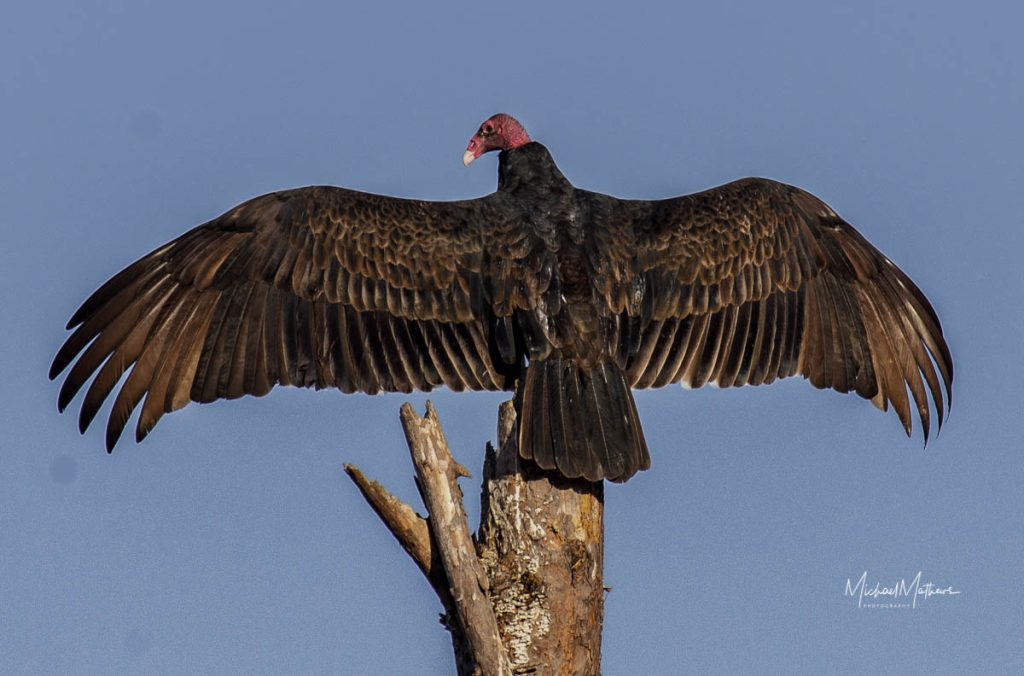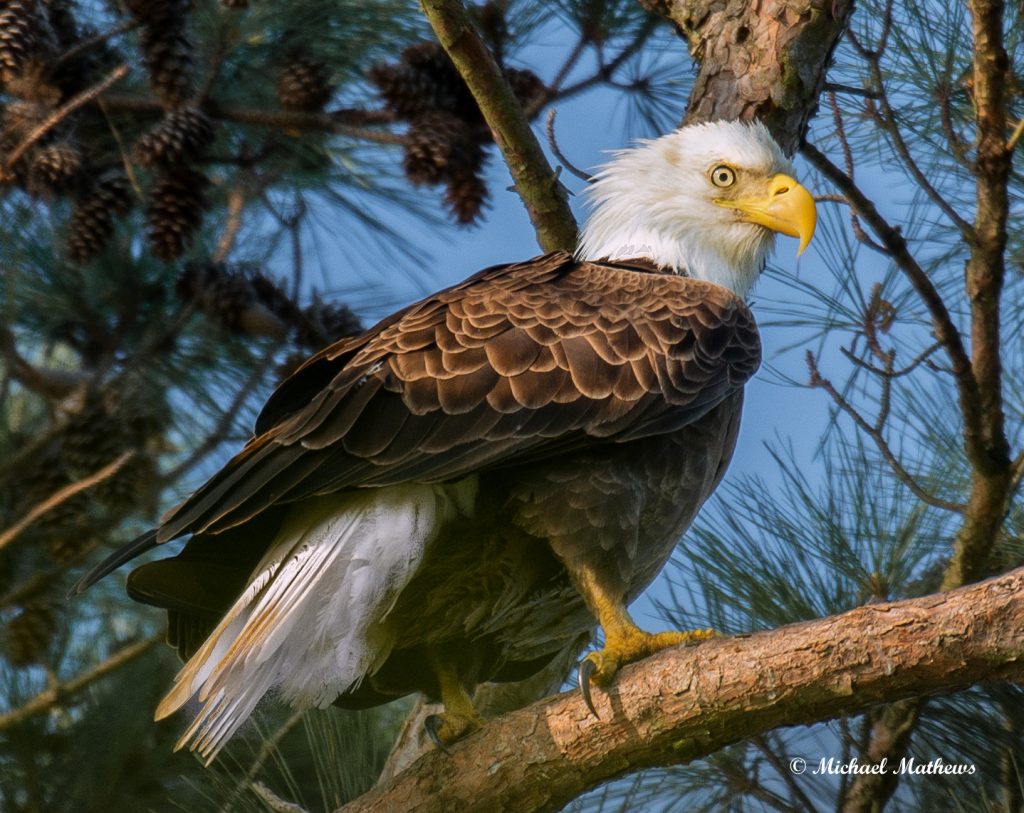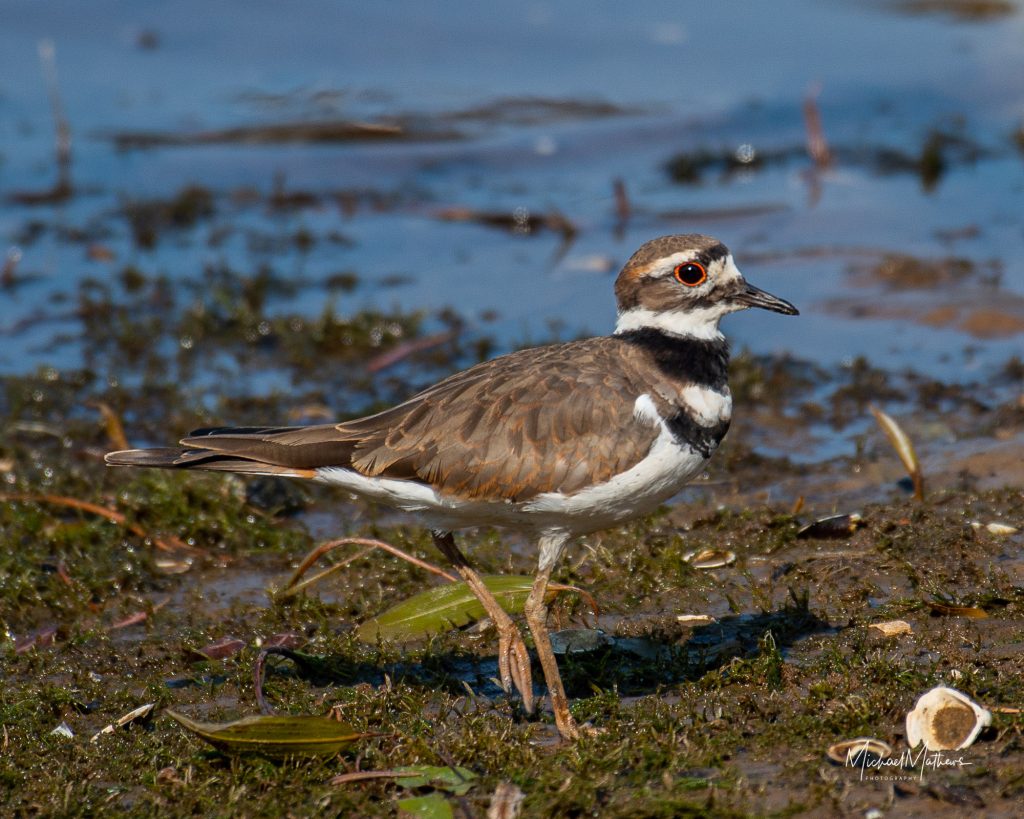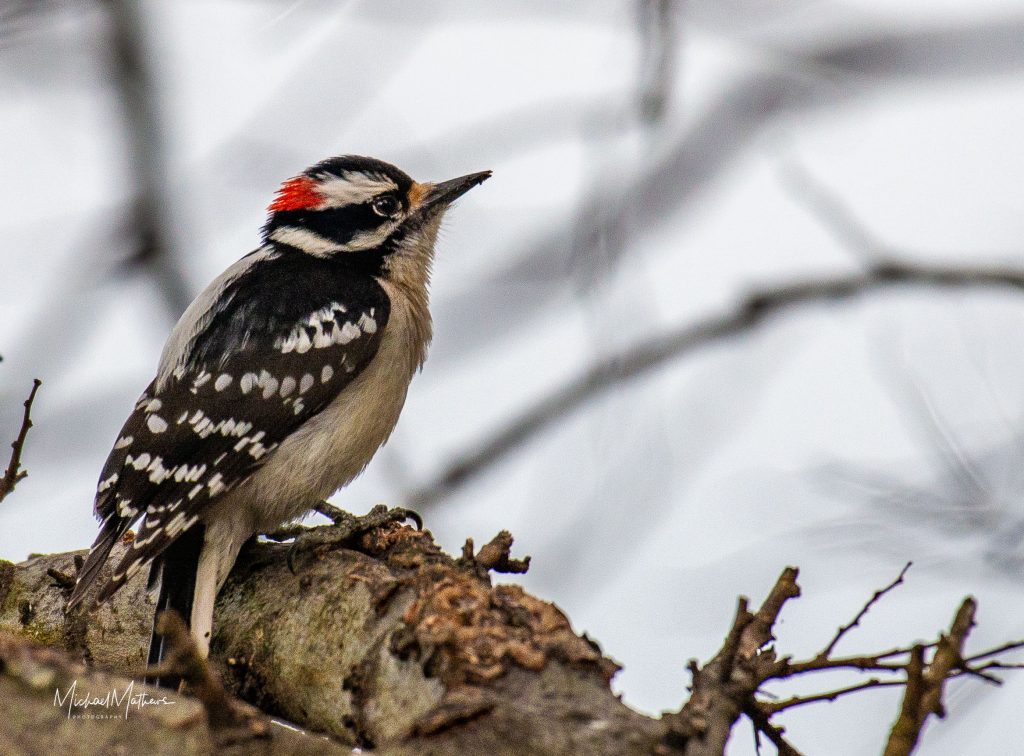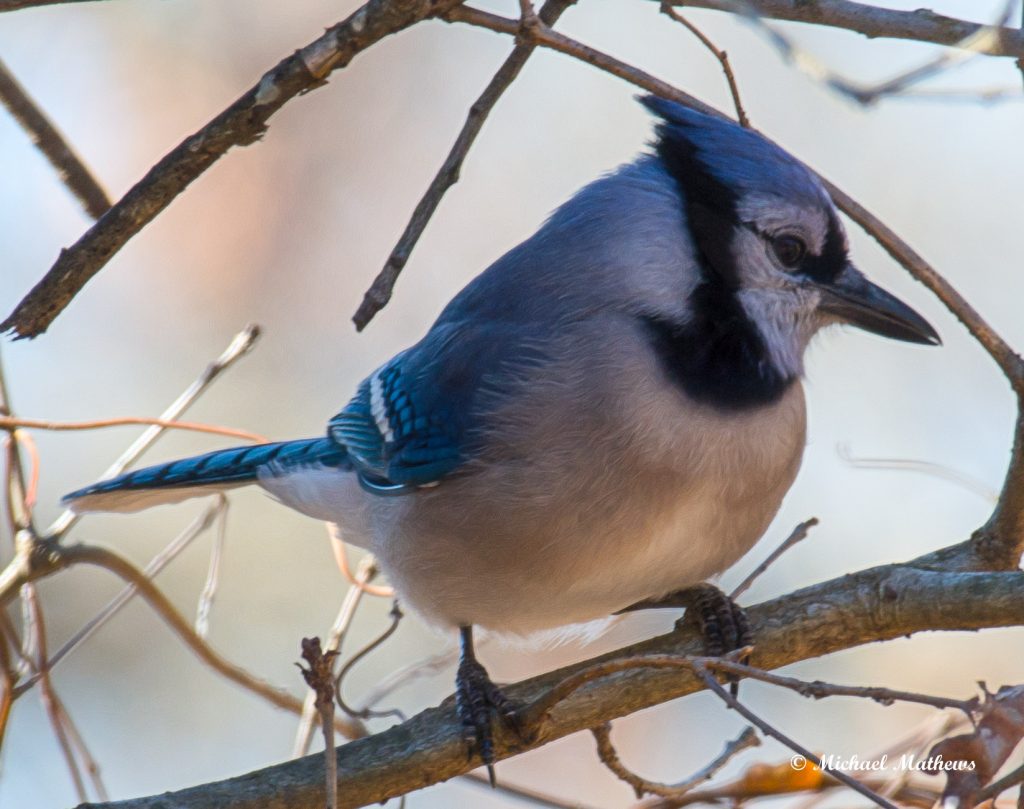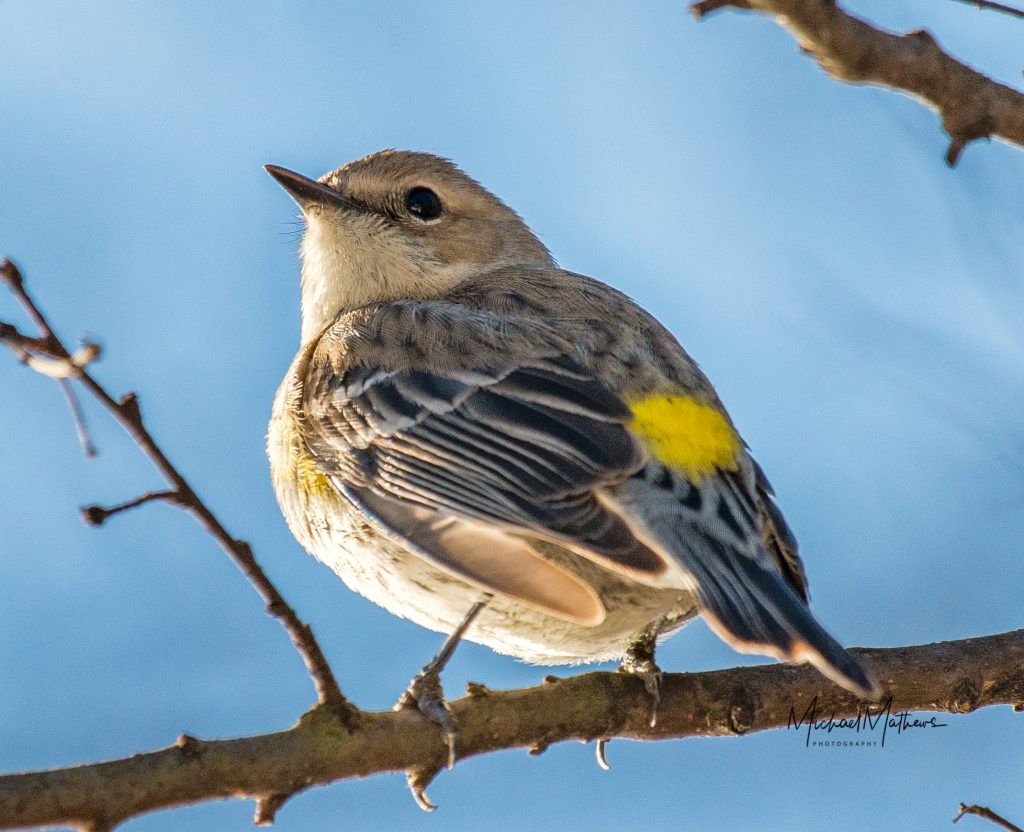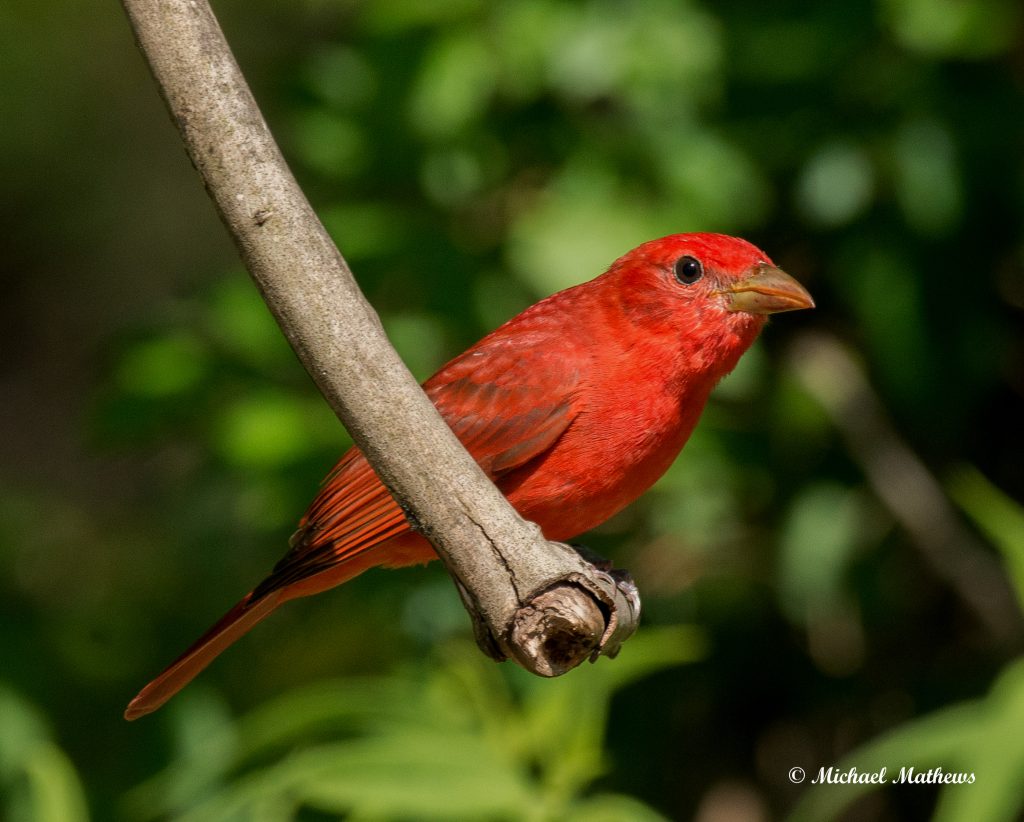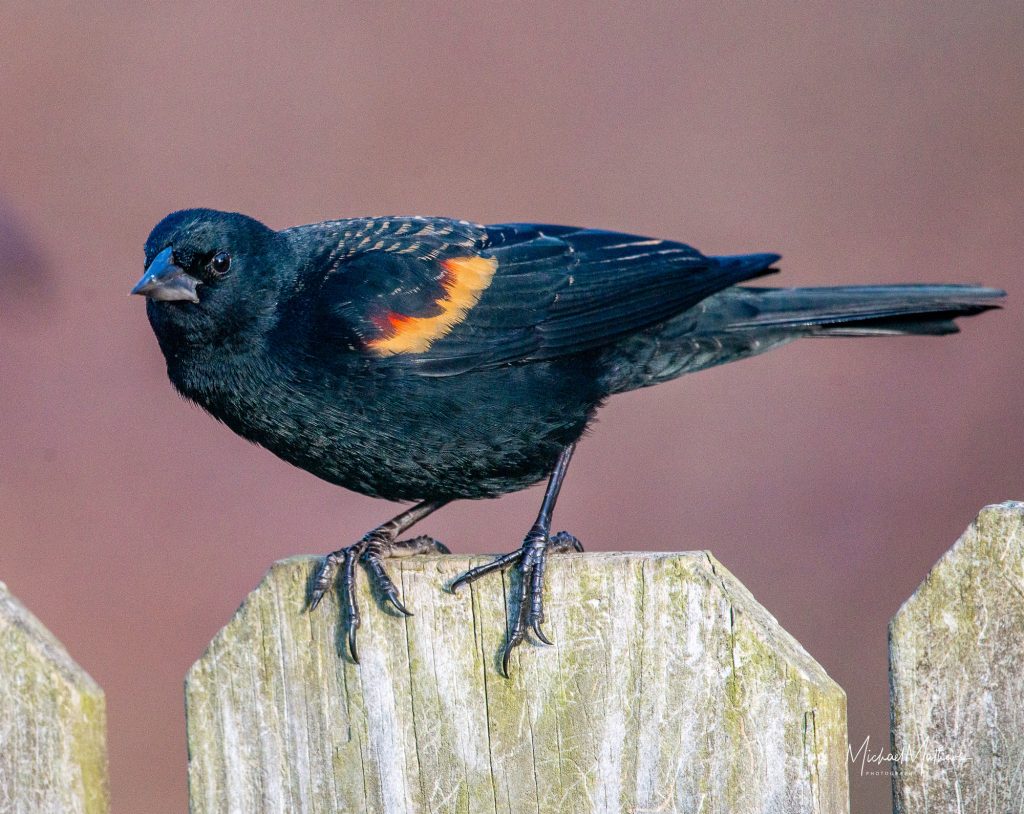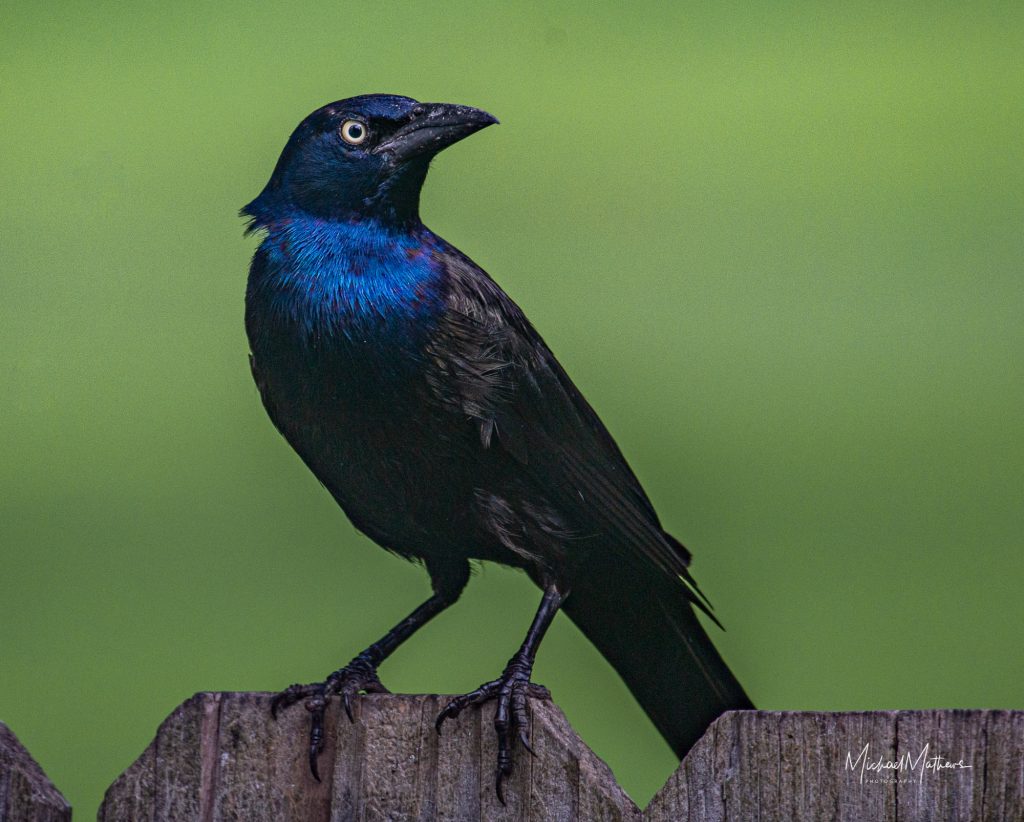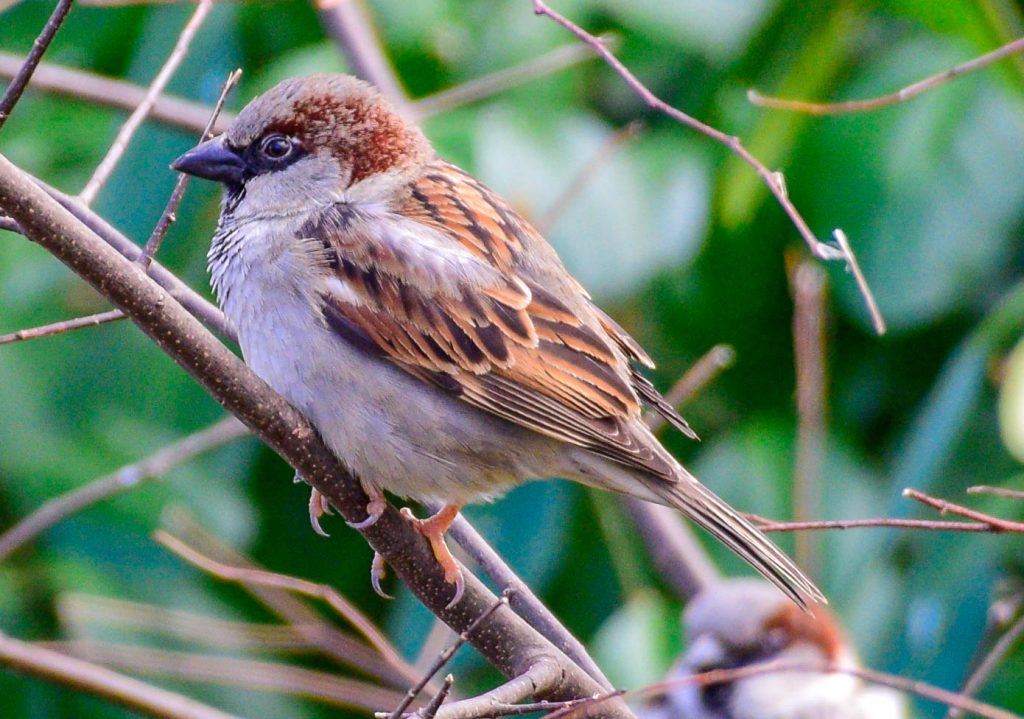
This ID Guide to East Texas Birds is a work in progress.
It is meant to primarily be a very basic photo ID list with little other information on the more commonly seen species. This is not intended to be a comprehensive list of all species ever seen in East Texas but rather the ones that are more commonly seen. However, through time, we will be adding more and more species. There will be only one photo at first. Later, I plan on adding a gallery for each species with numerous photos. There will be a link to the gallery by the name of the species. (Check out the Tufted Titmouse below for an example)
Click on the photos to see a larger version.
NOTE: Unless indicated otherwise, the photos were taken by members of this site. We will get photos of the other species as soon as we can. It is an ongoing project. If you have pictures of any of the species which do not currently have pictures and would like to contribute to this list, please contact us. We will consider other submissions and give you photo credit.
NOTICE: I realize the progress of working on the ID Guide to East Texas Birds is slow but we are basically done with STAGE 1 – listing the primary species with a photo and description.
STAGE 2 – will be adding multiple photos of each species and adding more species.
STAGE 3 – will include adding as many calls as possible.
After that, we will rewrite the descriptions to make them more pertinent to our area and the purpose of this guide. (Help in this area is welcomed).
It has been suggested that we also add a section for species that are difficult to tell apart. We hope to get to work on this after the first stages are completed. UNLESS SOMEONE WOULD LIKE TO JUMP UP AND TAKE UP THAT PROJECT. In addition, we will have male vs female photos for species exhibiting sexual dimorphism.
Take a Simple East Texas Bird ID Quiz
Take a very simple East Texas Bird Identification Quiz. We will be adding more of these and some will be challenging.
Common Loon (Gavia immer)
The common loon is a large member of the loon, or diver family of birds. Breeding adults have a plumage that includes a broad black head and neck with a greenish, purplish, or bluish sheen, blackish or blackish-grey upperparts, and pure white underparts except some black on the undertail coverts and vent. Non-breeding, which is the condition that we see in East Texas, adults are brownish with a dark neck and head marked with dark grey-brown. Their upperparts are dark brownish-grey with an unclear pattern of squares on the shoulders, and the underparts, lower face, chin, and throat are whitish. The sexes look alike, though males are significantly heavier than females. During the breeding season, loons live on lakes and other waterways in Canada; the northern United States (including Alaska); and southern parts of Greenland and Iceland. Common Loons winter on both coasts of the US as far south as Mexico, and on the Atlantic coast of Europe.
Common loons eat a variety of animal prey including fish, crustaceans, insect larvae, molluscs, and occasionally aquatic plant life. They swallow most of their prey underwater, where it is caught, but some larger items are first brought to the surface. Loons are monogamous; that is, a single female and male often together defend a territory and may breed together for a decade or more. Both members of a pair build a large nest out of dead marsh grasses and other plants formed into a mound along the vegetated shores of lakes. A single brood is raised each year from a clutch of one or two olive-brown oval eggs with dark brown spots which are incubated for about 28 days by both parents. Fed by both parents, the chicks fledge in 70 to 77 days. The chicks are capable of diving underwater when just a few days old, and they fly to their wintering areas before ice forms in the fall.
American White Pelican (Pelecanus erythrorhynchos)
The American White Pelican rivals the trumpeter swan, with a similar overall length, as the longest bird native to North America. Both very large and plump, it has an overall length of about 50–70 in (130–180 cm), courtesy of the huge beak which measures 11.3–15.2 in (290–390 mm) in males and 10.3–14.2 in (260–360 mm) in females. It has a wingspan of about 95–120 in (240–300 cm). The species also has the second-largest average wingspan of any North American bird, after the California condor. This large wingspan allows the bird to easily use soaring flight for migration. Bodyweight can range between 7.7 and 30 lb (3.5 and 13.6 kg), although typically these birds average between 11 and 20 lb (5.0 and 9.1 kg). One mean body mass of 15.4 lb (7.0 kg) was reported. Among standard measurements, the wing chord measures 20–26.7 in (51–68 cm) and the tarsus measures 3.9–5.4 in (9.9–13.7 cm) long.[6] The plumage is almost entirely bright white, except the black primary and secondary remiges, which are hardly visible except in flight. From early spring until after breeding has finished in mid-late summer, the breast feathers have a yellowish hue. After molting into the eclipse plumage, the upper head often has a grey hue, as blackish feathers grow between the small wispy white crest.
The bill is huge and flat on the top, with a large throat sac below, and, in the breeding season, is vivid orange in color as are the iris, the bare skin around the eye, and the feet. In the breeding season, there is a laterally flattened “horn” on the upper bill, located about one-third the bill’s length behind the tip. The horn is shed after the birds have mated and laid their eggs. Outside the breeding season, the bare parts become duller in color, with the naked facial skin yellow and the bill, pouch, and feet an orangy-flesh color.
Double Crested Cormorant (Phalacrocorax auritus)
The Double-Crested Cormorant (Phalacrocorax auritus) is a member of the cormorant family of seabirds. Its habitat is near rivers and lakes as well as in coastal areas and is widely distributed across North America, from the Aleutian Islands in Alaska down to Florida and Mexico. Measuring 70–90 cm (28–35 in) in length, it is an all-black bird which gains a small double crest of black and white feathers in breeding season. It has a bare patch of orange-yellow facial skin. Five subspecies are recognized. It mainly eats fish and hunts by swimming and diving. Its feathers, like those of all cormorants, are not waterproof and it must spend time drying them out after spending time in the water. Once threatened by the use of DDT, the numbers of this bird have increased markedly in recent years.
Great Blue Heron (Ardea herodias)
The great blue heron (Ardea herodias) is a large wading bird in the heron family Ardeidae, common near the shores of open water and in wetlands over most of North America and Central America, as well as the Caribbean and the Galápagos Islands. It is a rare vagrant to coastal Spain, the Azores, and areas of far southern Europe. An all-white population found only in south Florida and the Florida Keys is known as the great white heron. Debate exists about whether it is a white color morph of the great blue heron, a subspecies of it, or an entirely separate species.
The great blue heron can adapt to almost any wetland habitat in its range. It may be found in numbers in fresh and saltwater marshes, mangrove swamps, flooded meadows, lake edges, or shorelines. It is quite adaptable and may be seen in heavily developed areas as long as they hold bodies of fish-bearing water.
Great blue herons rarely venture far from bodies of water, but are occasionally seen flying over upland areas. They usually nest in trees or bushes near water’s edge, often on islands (which minimizes the potential for predation) or partially isolated spots.
Great Egret (Ardea alba)
The great egret (Ardea alba), also known as the common egret, large egret, or (in the Old World) great white egret or great white heron is a large, widely distributed egret, with four subspecies found in Asia, Africa, the Americas, and southern Europe. Distributed across most of the tropical and warmer temperate regions of the world, it builds tree nests in colonies close to water.
The great egret (Ardea alba), also known as the common egret, large egret, or (in the Old World) great white egret or great white heron is a large, widely distributed egret, with four subspecies found in Asia, Africa, the Americas, and southern Europe. Distributed across most of the tropical and warmer temperate regions of the world, it builds tree nests in colonies close to water.
Turkey Vulture (Cathartes aura)
The turkey vulture (Cathartes aura), also known in some North American regions as the turkey buzzard (or just buzzard), is the most widespread of the New World vultures. One of three species in the genus Cathartes of the family Cathartidae, the turkey vulture ranges from southern Canada to the southernmost tip of South America. It inhabits a variety of open and semi-open areas, including subtropical forests, shrublands, pastures, and deserts.
The turkey vulture is a scavenger and feeds almost exclusively on carrion. It finds its food using its keen eyes and sense of smell, flying low enough to detect the gasses produced by the beginnings of the process of decay in dead animals. In flight, it uses thermals to move through the air, flapping its wings infrequently. It roosts in large community groups. Lacking a syrinx—the vocal organ of birds—its only vocalizations are grunts or low hisses. It nests in caves, hollow trees, or thickets. Each year it generally raises two chicks, which it feeds by regurgitation. It has very few natural predators. In the United States, the vulture receives legal protection under the Migratory Bird Treaty Act of 1918.
Black Vulture (Coragyps atratus)
The black vulture (Coragyps atratus), also known as the American black vulture, is a bird in the New World vulture family whose range extends from the southeastern United States to Central Chile and Uruguay in South America. Although a common and widespread species, it has a somewhat more restricted distribution than its compatriot, the turkey vulture, which breeds well into Canada and south to Tierra del Fuego. It inhabits relatively open areas which provide scattered forests or shrublands. With a wingspan of 1.5 m (4.9 ft), the black vulture is a large bird though relatively small for a vulture. It has black plumage, a featherless, grayish-black head and neck, and a short, hooked beak.
The black vulture is a scavenger and feeds on carrion, but will also eat eggs or kill newborn animals. In areas populated by humans, it also feeds at garbage dumps. It finds its meals either by using its keen eyesight or by following other (New World) vultures, which possess a keen sense of smell. Lacking a syrinx—the vocal organ of birds—its only vocalizations are grunts or low hisses. It lays its eggs in caves or hollow trees or on the bare ground, and generally raises two chicks each year, which it feeds by regurgitation. In the United States, the vulture receives legal protection under the Migratory Bird Treaty Act of 1918.
Osprey (Pandion haliaetus)
The Osprey or more specifically the Western Osprey (Pandion haliaetus) — also called sea hawk, river hawk, and fish hawk — is a diurnal, fish-eating bird of prey with a cosmopolitan range. It is a large raptor, reaching more than 60 cm (24 in) in length and 180 cm (71 in) across the wings. It is brown on the upperparts and predominantly greyish on the head and underparts.
The Osprey tolerates a wide variety of habitats, nesting in any location near a body of water providing an adequate food supply. It is found on all continents except Antarctica, although in South America it occurs only as a non-breeding migrant.
As its other common names suggest, the Osprey’s diet consists almost exclusively of fish. It possesses specialized physical characteristics and exhibits unique behavior to assist in hunting and catching prey. As a result of these unique characteristics, it has been given its own taxonomic genus, Pandion and family, Pandionidae.
Red-Tailed Hawk (Buteo jamaicensis)
The red-tailed hawk (Buteo jamaicensis) is a bird of prey that breeds throughout most of North America. It is one of the most common members within the genus of Buteo in North America. The red-tailed hawk is one of three species colloquially known in the United States as the “chickenhawk”, though it rarely preys on standard-sized chickens. The red-tailed hawk occupies a wide range of habitats.
The red-tailed hawk is one of the largest members of the genus Buteo, typically weighing from 690 to 1,600 g (1.5 to 3.5 lb) and measuring 45–65 cm (18–26 in) in length, with a wingspan from 110–141 cm (3 ft 7 in–4 ft 8 in). This species displays sexual dimorphism in size, with females averaging about 25% heavier than males.
The diet of red-tailed hawks is highly variable but it is most often a predator of small mammals such as rodents. Large numbers of birds and reptiles can occur in the diet in several areas and can even be the primary foods. Meanwhile, amphibians, fish and invertebrates can seem rare in the hawk’s regular diet; however, they are not infrequently taken by immature hawks.
Bald Eagle (Haliaeetus leucocehalus)
The Bald Eagle (Haliaeetus leucocephalus) is a bird of prey found in North America. Its range includes most of Canada and Alaska, all of the contiguous United States, and northern Mexico. It is found near large bodies of open water with an abundant food supply and old-growth trees for nesting.
The Bald Eagle is an opportunistic feeder which subsists mainly on fish, which it swoops down and snatches from the water with its talons. It builds the largest nest of any North American bird and the largest tree nests ever recorded for any animal species, up to 4 m (13 ft) deep, 2.5 m (8.2 ft) wide, and 1 metric ton (1.1 short tons) in weight. Sexual maturity is attained at the age of four to five years.
The adult is mainly brown with a white head and tail. The sexes are identical in plumage, but females are about 25 percent larger than males. The beak is large and hooked. The plumage of the immature is brown and sometimes spotted with lighter shades.
The Bald Eagle has a body length of 70–102 cm (28–40 in). Typical wingspan is between 1.8 and 2.3 m (5 ft 11 in and 7 ft 7 in) and mass is normally between 3 and 6.3 kg (6.6 and 13.9 lb). Females are about 25% larger than males, averaging as much as 5.6 kg (12 lb), and against the males’ average weight of 4.1 kg (9.0 lb).
American Coot (Fulica americana)
The American Coot, also known as a mud hen, is a bird of the family Rallidae. Though commonly mistaken for ducks, American Coots are only distantly related to ducks, belonging to a separate order. Unlike the webbed feet of ducks, coots have broad, lobed scales on their lower legs and toes that fold back with each step in order to facilitate walking on dry land. Coots live near water, typically inhabiting wetlands and open water bodies in North America. Groups of coots are called covers or rafts. The oldest known coot lived to be 22 years old.
The American Coot is a migratory bird that occupies most of North America. It lives in the Pacific and southwestern United States and Mexico year-round and occupies more northeastern regions during the summer breeding season. Coots generally build floating nests and lay 8–12 eggs per clutch. Females and males have similar appearances, but they can be distinguished during aggressive displays by the larger ruff (head plumage) on the male. American coots eat primarily algae and other aquatic plants but also animals (both vertebrates and invertebrates) when available.
Much research has been done on the breeding habits of American Coots. Studies have found that mothers will preferentially feed offspring with the brightest plume feathers, a characteristic known as chick ornaments. American Coots are also susceptible to conspecific brood parasitism and have evolved mechanisms to identify which offspring are theirs and which are from parasitic females.
Killdeer (Charadrius vociferus)
The Killdeer is a large plover found in the Americas. The killdeer’s common name comes from its often-heard call. Its upperparts are mostly brown with rufous fringes, the head has patches of white and black, and there are two black breast bands. The belly and the rest of the breast are white.
The non-breeding habitat of the Killdeer includes coastal wetlands, beach habitats, and coastal fields. Its breeding grounds are generally open fields with short vegetation (but locations such as rooftops are sometimes used); although it is a shorebird, it does not necessarily nest close to water. The nest itself is a scrape lined with vegetation and white material, such as pebbles or seashell fragments. This bird lays a clutch of four to six buff to beige eggs with dark markings. The breeding season occurs from mid-March to August, with later timing of egg-laying in the northern portion of the range. Both parents incubate the eggs for 22 to 28 days on average. The young stay in the nest until the day after being hatched, when they are led by their parents to a feeding territory (generally with dense vegetation where hiding spots are abundant), where the chicks feed themselves. The young then fledge about 31 days after hatching, and breeding first occurs after one year of age.
The Killdeer primarily feeds on insects, although other invertebrates and seeds are eaten. It forages almost exclusively in fields, especially those with short vegetation and with cattle and standing water. It primarily forages during the day; but, in the non-breeding season, when the moon is full or close to full, it forages at night. This is likely because of increased insect abundance and reduced predation during the night. Predators of the Killdeer include various birds and mammals. There are multiple responses to predation, ranging from calling to the “ungulate display”, which can be fatal for the performing individual. Its population is declining, but this trend is not severe enough for the killdeer to be considered a vulnerable species.
Ring-Billed Gull (Larus delawarensis)
The Ring-billed Gull is a medium-sized gull. The genus name is from Latin Larus which appears to have referred to a gull or other large seabird. The specific delawarensis refers to the Delaware River.
Species is named for the dark ring around its bill. Adults are 49 cm (19 in) length and have a 124 cm (49 in) wingspan. The head, neck, and underparts are white; the relatively short bill is yellow with a dark ring; the back and wings are silver gray; and the legs are yellow. The eyes are yellow with red rims. This gull takes three years to reach its breeding plumage; its appearance changes with each fall molt. The average lifespan of an individual that reaches adulthood is 10.9 years.
The Ring-billed Gulls’ breeding habitat is near lakes, rivers, or the coast in Canada and the northern United States. They nest colonially on the ground, often on islands. This bird tends to be faithful to its nesting site, if not its mate, from year to year.
They are migratory and most move south to the Gulf of Mexico and the Atlantic and Pacific coasts of North America, and the Great Lakes.
Ring-billed Gulls forage in flight or pick up objects while swimming, walking or wading. They also steal food from other birds and frequently scavenge. They are omnivorous; their diet may include insects, fish, grain, eggs, earthworms, and rodents. The gull’s natural enemies are rats, foxes, dogs, cats, raccoons, coyotes, eagles, hawks, and owls.
Ruby-Throated Hummingbird (Archilochus colubris)
Ruby-throated hummingbirds are solitary. Adults of this species are not social, other than during courtship (which lasts a few minutes); the female also cares for her offspring. Both males and females of any age are aggressive toward other hummingbirds. They may defend territories, such as a feeding territory, attacking and chasing other hummingbirds that enter.
They feed frequently while active during the day. When temperatures drop, particularly on cold nights, they may conserve energy by entering hypothermic torpor.
Belted Kingfisher (Ceryle alcyon)
The belted kingfisher is a stocky, medium-sized bird. The adult female averages slightly larger than the adult male.
This species has a large head with a shaggy crest. Its long, heavy bill is black with a grey base. This kingfisher shows reverse sexual dimorphism, with the female more brightly colored than the male. Both sexes have a slate blue head, large white collar, a large blue band on the breast, and white underparts. The back and wings are slate blue with black feather tips with little white dots. The female features a rufous band across the upper belly that extends down the flanks. Juveniles of this species are similar to adults, but both sexes feature the rufous band on the upper belly. Juvenile males will have a rufous band that is somewhat mottled while the band on females will be much thinner than that on adult females.
The belted kingfisher is often seen perched prominently on trees, posts, or other suitable “watchpoints” close to water before plunging in headfirst after its fish prey. They also eat amphibians, small crustaceans, insects, small mammals and reptiles.
The nest of the belted kingfisher is a long tunnel and often slopes uphill. One possible reason for the uphill slope is that, in case of flooding, the chicks will be able to survive in the air pocket formed by the elevated end of the tunnel.
Red-headed Woodpecker (Melanerpes erythrocephalus)
Adults are strikingly tri-colored, with a black back and tail and a red head and neck. Their underparts are mainly white. The wings are black with white secondary remiges. Adult males and females are identical in plumage.
These birds fly to catch insects in the air or on the ground, forage on trees or gather and store nuts. They are omnivorous, eating insects, seeds, fruits, berries, nuts, and occasionally small rodents and even the eggs of other birds. About two-thirds of their diet is made up of plants.
Red-Bellied Woodpecker (Melanerpes carolinus)
The Red-bellied Woodpecker is a medium-sized woodpecker of the family Picidae. It breeds mainly in the eastern United States, ranging as far south as Florida and as far north as Canada. Its common name is somewhat misleading, as the most prominent red part of its plumage is on the head; the Redheaded Woodpecker, however, is another species that is a rather close relative but looks quite different.
Adults are mainly light gray on the face and underparts; they have black and white barred patterns on their back, wings and tail. Adult males have a red cap going from the bill to the nape; females have a red patch on the nape and another above the bill. The reddish tinge on the belly that gives the bird its name is difficult to see in field identification.
Downy Woodpecker (Picoides pubescens)
Adult Downy Woodpeckers are the smallest of North America’s woodpeckers. They are mainly black on the upperparts and wings, with a white back, throat and belly and white spotting on the wings. There is a white bar above the eye and one below. They have a black tail with white outer feathers barred with black. Adult males have a red patch on the back of the head whereas juvenile birds display a red cap.
The Downy Woodpecker is virtually identical in plumage pattern to the larger hairy woodpecker, but it can be distinguished from the hairy by the presence of black spots on its white tail feathers and the length of its bill. The Downy Woodpecker’s bill is shorter than its head, whereas the hairy woodpecker’s bill is approximately equal to head length.
Downy Woodpeckers are native to forested areas, mainly deciduous, of North America.
Downy Woodpeckers nest in a tree cavity excavated by the nesting pair in a dead tree or limb. In the winter, they roost in tree cavities. Downy Woodpeckers forage on trees, picking the bark surface in summer and digging deeper in winter. They mainly eat insects, also seeds and berries. In winter, especially, Downy Woodpeckers can often be found in suburban backyards with mature trees. There, they may feed on suet and shelled peanuts provided by mesh birdfeeders.
Pileated Woodpecker (Dryocopus pileatus)
The Pileated Woodpecker is a woodpecker native to North America. This insectivorous bird is an inhabitant of deciduous forests in eastern North America, the Great Lakes, the boreal forests of Canada, and parts of the Pacific Coast. It is the second-largest woodpecker on the continent, after the critically endangered ivory-billed woodpecker. The term “pileated” refers to the bird’s prominent red crest, with the term from the Latin pileatus meaning “capped”.
They are mainly black with a red crest, and have a white line down the sides of the throat. They show white on the wings in flight. The flight of these birds is strong and direct, but undulates in the way characteristic of woodpeckers. Adult males have a red line from the bill to the throat, in adult females these are black.
These birds mainly eat insects, especially carpenter ants and wood-boring beetle larvae. They also eat fruits, nuts, and berries, including poison ivy berries. Pileated woodpeckers often chip out large and roughly rectangular holes in trees while searching out insects, especially ant colonies. They also lap up ants by reaching with their long tongues into crevices.
Usually, Pileated Woodpeckers excavate their large nests in the cavities of dead trees. Woodpeckers make such large holes in dead trees that the holes can cause a small tree to break in half. The roost of a Pileated Woodpecker usually has multiple entrance holes. Pileated woodpeckers raise their young every year in a hole in a tree. In April, the hole made by the male attracts a female for mating and raising their young. Once the brood is raised, the Pileated Woodpeckers abandon the hole and do not use it the next year.
Eastern Phoebe (Sayornis phoebe)
The Eastern Phoebe (Sayornis phoebe) is a small flycatcher that breeds in eastern North America, although its normal range does not include the southeastern coastal United States.
It is migratory, wintering in the southernmost United States and Central America.
This species appears remarkably big-headed, especially if it puffs up the small crest. Its plumage is gray-brown above. It has a white throat, dirty gray breast and buffish underparts which become whiter during the breeding season. Two indistinct buff bars are present on each wing. Its lack of an eye ring, wingbars, and its all dark bill distinguish it from other North American tyrant flycatchers, and it pumps its tail up and down like other phoebes when perching on a branch. The Eastern Phoebe’s call is a sharp chip, and the song, from which it gets its name, is fee-bee.
The breeding habitat of the Eastern Phoebe is open woodland, farmland and suburbs, often near water. This phoebe is insectivorous and often perches conspicuously when seeking food items. It also eats fruits and berries in cooler weather.
It often nests on human structures such as bridges and buildings. Nesting activity may start as early as the first days of April. The nest is an open cup with a mud base and lined with moss and grass, built-in crevice in a rock or man-made site; two to six eggs are laid. Both parents feed the young and usually raise two broods per year. The Eastern Phoebe is occasionally host to the nest-parasitic brown-headed cowbird (Molothrus ater).
Eastern Kingbird (Tyrannus tyrannus)
The Eastern Kingbirds are grey-black on the upperparts with light underparts; they have a long black tail with a white end and long, pointed wings. They have a red patch on their crown, seldom seen.
The call is a high-pitched, buzzing and unmusical chirp, frequently compared to an electric fence.
Eastern Kingbirds wait on an open perch and fly out to catch insects in flight, sometimes hovering to pick prey off vegetation.
Scissor-Tailed Flycatcher (Tyrannus forficatus)
The Scissor-tailed Flycatcher (Tyrannus forficatus), also known as the Texas bird-of-paradise and swallow-tailed flycatcher, is a long-tailed bird of the genus Tyrannus, whose members are collectively referred to as kingbirds. This genus earned its name because several of its species are extremely aggressive on their breeding territories, where they will attack larger birds such as crows, hawks and owls.
Adult birds have pale gray heads and upperparts, light underparts, salmon-pink flanks and under tail coverts, and dark gray wings. Axillars and patch on underwing coverts are red. Their extremely long, forked tails, which are black on top and white on the underside, are characteristic and unmistakable.
They build a cup nest in isolated trees or shrubs, sometimes using artificial sites such as telephone poles near towns. The male performs a spectacular aerial display during courtship with his long tail forks streaming out behind him. Both parents feed the young. Like other kingbirds, they are very aggressive in defending their nest. Clutches contain three to six eggs.
In the summer, Scissor-tailed Flycatchers feed mainly on insects (grasshoppers, robber-flies, and dragonflies), which they may catch by waiting on a perch and then flying out to catch them in flight (hawking). For additional food in the winter, they will also eat some berries.
Northern Blue Jay (Cyanocitta cristata)
The Northern Blue Jay (Cyanocitta cristata) is a passerine bird in the family Corvidae, native to North America. It is predominantly blue with a white chest and underparts, and a blue crest; it has a black, U-shaped collar around its neck and a black border behind the crest. Males and females are similar in size and plumage, and plumage does not vary throughout the year.
The Northern Blue Jay mainly feeds on nuts and seeds such as acorns, soft fruits, arthropods, and occasionally small vertebrates. It typically gleans food from trees, shrubs, and the ground, though it sometimes hawks insects from the air. Like squirrels, Northern Blue Jays are known to hide nuts for later consumption. It builds an open cup nest in the branches of a tree, which both sexes participate in constructing. The clutch can contain two to seven eggs, which are blueish or light brown with brown spots. Young are altricial, and are brooded by the female for 8–12 days after hatching. They may remain with their parents for one to two months.
Its plumage is lavender-blue to mid-blue in the crest, back, wings, and tail, and its face is white. The underside is off-white and the neck is collared with black which extends to the sides of the head. The wing primaries and tail are strongly barred with black, sky-blue and white. The bill, legs, and eyes are all black. Males and females are almost identical, but the male is slightly larger.
Carolina Chickadee (Poecile carolinensis)
The Carolina Chickadee (Poecile carolinensis) is a small passerine bird in the tit family Paridae. Adults have a black cap and bib with white sides to the face. Their underparts are white with rusty brown on the flanks; their back is grey. They have a short dark bill, short wings and a moderately long tail.
The most famous call is the familiar chick-a-dee-dee-dee which gave this bird its name and its song is fee-bee-fee-bay.
Their breeding habitat is mixed or deciduous woods in the United States from New Jersey west to southern Kansas and south to Florida and Texas. They nest in a hole in a tree; the pair excavates the nest, using a natural cavity or sometimes an old woodpecker nest. They may interbreed with black-capped Chickadees where the ranges overlap, which can make identification difficult.
They are permanent residents, not usually moving south even in severe winter weather.
These birds hop along tree branches searching for insects, sometimes hanging upside down or hovering; they may make short flights to catch insects in the air. Insects form a large part of their diet, especially in summer; seeds and berries become important in winter. They sometimes hammer seeds on a tree or shrub to open them; they also will store seeds for later use.
Tufted Titmouse (Baeolophus bicolor)
The Tufted Titmouse is a small songbird from North America. These small birds are approximately 6 inches in length, with a white front, and grey upper body outlined with rust-colored flanks. Other characteristics include their black forehead and the tufted grey crest on their head.
The song of the Tufted Titmouse is usually described as a whistled peter-peter-peter, though this song can vary in approximately 20 notable ways.
The bird’s habitat is deciduous and mixed woods as well as gardens, parks, and shrublands. Though the Tufted Titmouse is non-migratory and originally native to Ohio and Mississippi, factors such as bird feeders have caused these birds to occupy a larger amount of territory across the United States and stretching into Ontario, Canada.
The Tufted Titmouse gathers food from the ground and from tree branches. It eats berries, nuts, insects, small fruit, snails, and seeds. Caterpillars constitute a major part of its diet during the summer. Titmice will stash food for later use.
Tufted Titmice nest in a hole in a tree, either a natural cavity, a man-made nest box, or sometimes an old woodpecker nest. They line the nest with soft materials, sometimes plucking hair from a live animal such as a dog. If they find snake skin sheddings, they may incorporate pieces into their nest.
Brown-headed Nuthatch (Sitta pusilla)
The Brown-headed Nuthatch (Sitta pusilla) is a small songbird found in pine forests throughout the Southeastern United States. The bird, like other nuthatches, possesses a sharp black nail-like beak, which it uses to pound open seeds. It is a frequent visitor to feeding stations and is highly fond of sunflower seeds and suet cakes.
Bold and inquisitive, this bird is readily approachable by humans. The bird is frequently observed using a small chip of bark held in its beak as a tool to dig for insects.
This species sports a brown cap with narrow black eyeline and buff white cheeks, chin, and belly. Its wings are bluish-gray in color. A small white spot is found at the nape of the neck. The bird’s call is a sharp whee-hyah sounding very similar to a “rubber duck” toy and particularly is loud for a bird its size. They also make softer “pit pit pit” calls while in flight as well as other squeaking noises. If heard or seen well, this species is virtually unmistakable in the wild, since it overlaps only with the very differently marked and larger red-breasted and white-breasted nuthatches.
Carolina Wren (Thryothorus ludovicianus)
The Carolina Wren (Thryothorus ludovicianus) is a common species of Wren that is a resident in the eastern half of the United States of America.
The Carolina Wren is a fairly large Wren; the second largest in the United States species after the cactus Wren. Sexual dimorphism is slight with males being larger than their mates.
Carolina Wrens sing year-round and at any point during the daytime, with the exception of performing during the harshest weather conditions. Males alone sing, and have a repertoire of at least twenty different phrase patterns and on average, thirty two. One of these patterns is repeated for several minutes, and although the male’s song can be repeated up to twelve times, the general number of songs range from three to five times in repetition. Some general vocalizations have been transcribed as teakettle-teakettle-teakettle and cheery-cheery-cheery.
Carolina Wrens spend the majority of their time on or near the ground searching for food, or in tangles of vegetation and vines. They also probe bark crevices on lower tree levels or pick up leaf-litter in order to search for prey. Their diet consists of invertebrates, such as beetles, true bugs, grasshoppers, katydids, spiders, ants, bees, and wasps. Small lizards and tree frogs also make up the carnivorous portion of their diet. Vegetable matter makes up a small percentage of their diets, such as fruit pulp and various seeds. In the northern portion of their range, they frequent bird feeders.
Brood parasitism by the brown-headed cowbird is common, with up to 25% of Carolina Wren nests being affected.
Eastern Blue Bird (Sialia sialis)
The Eastern Bluebird (Sialia sialis) is a small thrush found in open woodlands, farmlands, and orchards.
The bright-blue breeding plumage of the male makes this species a favorite of birders. The male’s call includes sometimes soft warbles of ‘jeew’ or ‘chir-wi’ or the melodious song ‘chiti WEEW wewidoo’.
About two-thirds of an adult bluebird’s diet consists of insects and other invertebrates. The remainder is made up of wild fruits or berries.
Eastern bluebirds are very social birds. At times, they gather in flocks of a hundred or more. However, they are territorial during the breeding season and may continue to defend a feeding area throughout the winter. Mating occurs in the spring and summer. A mature female typically raises two broods each season. Construction of the nest is done primarily by the female and takes around 10 days to complete. Each female lays three to seven light-blue or, rarely, white eggs. The female incubates the eggs, which hatch after 13 to 16 days. The female broods the chicks for up to seven days after hatching. Fledglings then leave the nest 15 to 20 days after hatching.
Both parents cooperate in raising the young, which they feed a diet consisting almost entirely of insects. Some young stay around the nest to help raise another brood. Fledglings are grayish in color, with speckled breasts. The blue color becomes much more prominent and the speckles on their breasts disappear as they mature. Bluebirds may begin breeding the summer after they are hatched.
American Robin (Turdus migratorius)
The American Robin (Turdus migratorius) is a migratory songbird of the true thrush genus and Turdidae, the wider thrush family.
The American Robin is active mostly during the day and assembles in large flocks at night. Its diet consists of invertebrates (such as beetle grubs, earthworms, and caterpillars), fruits, and berries. It is one of the earliest bird species to lay its eggs, beginning to breed shortly after returning to its summer range from its winter range. The robin’s nest consists of long coarse grass, twigs, paper, and feathers, and is smeared with mud and often cushioned with grass or other soft materials. It is among the earliest birds to sing at dawn, and its song consists of several discrete units that are repeated.
The adult robin’s main predators are hawks, domestic cats, and snakes. When feeding in flocks, it can be vigilant, watching other birds for reactions to predators. Brown-headed cowbirds (Molothrus ater) lay eggs in robin nests (see brood parasite), but the robins usually reject the eggs.
The head varies from jet black to gray, with white eye arcs and white supercilia. The throat is white with black streaks, and the belly and under tail coverts are white. The robin has a brown back and a reddish-orange breast, varying from a rich red maroon to peachy orange. The bill is mainly yellow with a variably dark tip, the dusky area becoming more extensive in winter, and the legs and feet are brown.
The sexes are similar, but the female tends to be duller than the male, with a brown tint to the head, brown upperparts and less-bright underparts. However, some birds cannot be accurately sexed on the sole basis of plumage.
Northern Mockingbird (Mimus polyglottos)
The Northern Mockingbird (Mimus polyglottos) is mainly a permanent resident, but northern birds may move south during harsh weather. The Northern Mockingbird is known for its mimicking ability, as reflected by the meaning of its scientific name, “many-tongued mimic”. The Northern Mockingbird has gray to brown upper feathers and a paler belly. Its tail and wings have white patches which are visible in flight.
The Northern Mockingbird is an omnivore, eating both insects and fruits. It is often found in open areas and forest edges but forages in grassy land. These birds forage on the ground or in vegetation; they also fly down from a perch to capture food. While foraging, they frequently spread their wings in a peculiar two-step motion to display the white patches. There is disagreement among ornithologists over the purpose of this behavior, with hypotheses ranging from deceleration to intimidation of predators or prey.
Both the male and female are involved in the nest building. The male does most of the work, while the female perches on the shrub or tree where the nest is being built to watch for predators. The nest is built approximately three to ten feet above the ground. The female lays three to five eggs, and she incubates them for nearly two weeks. Once the eggs are hatched, both the male and female will feed the chicks.
Both male and female mockingbirds sing, with the latter being generally quieter and less vocal. Male commencement of singing is in late January to February and continues into the summer and the establishing of territory into the fall. Frequency in female singing is more sporadic, as it sings less often in the summer and fall, and only sings when the male is away from the territory. The mockingbird also possesses a large song repertoire that ranges from 43 to 203 song types and the size varies by region. Repertoire sizes ranged from 14 to 150 types in Texas, and two studies of mockingbirds in Florida rounded estimates to 134 and 200, approximately.
Brown Thrasher (Toxostom rufum)
The Brown Thrasher is a large-sized thrasher. It has brown upperparts with a white under part with dark streaks. Because of this, it is often confused with the smaller wood thrush (Hylocichla mustelina), among other species. The Brown Thrasher is noted for having over 1000 song types, and the largest song repertoire of birds. However, each note is usually repeated in two or three phrases.
The Brown Thrasher is an omnivore, with its diet ranging from insects to fruits and nuts. The usual nesting areas are shrubs, small trees, or at times on ground level. Brown thrashers are generally inconspicuous but territorial birds, especially when defending their nests, and will attack species as large as humans.
The Brown Thrasher is bright reddish-brown above with thin, dark streaks on its buffy underparts.[13] It has a whitish-colored chest with distinguished teardrop-shaped markings on its chest. Its long, rufous tail is rounded with paler corners, and eyes are a brilliant yellow. Its bill is brownish, long, and curves downward. Both male and females are similar in appearance.
Cedar Waxwing (Bombycill cedrorum)
The Cedar Waxwing (Bombycilla cedrorum) is a medium-sized, mostly brown, gray, and yellow bird named for its wax-like wingtips. Its diet includes cedar cones, fruit, and insects. The Cedar Waxwing is not endangered.
The two common calls of these birds include very high-pitched whistles and buzzy trills about a half-second long often represented as see or sree. Its call can also be described as “high, thin, whistles.” They call often, especially in flight.
Preferred habitat consists of trees at the edge of wooded areas, or “open” forests, especially those that provide access to berry sources as well as water. They are frequently seen in fruiting trees. Waxwings are attracted to the sound of running water and love to bathe in and drink from shallow creeks.
Outside the breeding season, Cedar Waxwings often feed in large flocks numbering hundreds of birds. This species is nomadic and irruptive, with erratic winter movements, though most of the population migrates farther south into the United States and beyond, sometimes reaching as far as northern South America. They will move in huge numbers if berry supplies are low.
The Cedar Waxwing eats berries and sugary fruit year-round, including “dogwood, serviceberry, cedar, juniper, hawthorn, and winterberry”, with insects becoming an important part of the diet in the breeding season.
When the end of a twig holds a supply of berries that only one bird at a time can reach, members of a flock may line up along the twig and pass berries beak to beak down the line so that each bird gets a chance to eat.
Sometimes, Cedar Waxwings will eat fruit that is overripe and has begun to ferment, intoxicating the bird.
Yellow-Rumped Warbler (Dendroica coronata)
The Yellow-rumped Warbler (Setophaga coronata) is a North American bird species.
In summer, adult females have streaked backs of black on blue-green and conspicuous yellow patches on the crown, flank, and rump. This individual is a myrtle warbler, as shown by the white throat.
The Yellow-rumped Warbler breeds from eastern North America west to the Pacific, and southward from there into Western Mexico. Yellow-rumped warblers spend the breeding season in mature coniferous and mixed coniferous-deciduous woodlands (such as in patches of aspen, birch, or willow).
In summers, males of both forms have streaked backs of black on slate blue, white wing patches, a streaked breast, and conspicuous yellow patches on the crown, flank, and rump.
They are primarily insectivorous. The species is perhaps the most versatile foragers of all warblers. Beyond gleaning from leaves like other New World warblers, they often flit, flycatcher-like, out from their perches in short loops, to catch flying insects.
They eat wild seeds such as from beach grasses and goldenrod, and they may come to feeders, where they’ll take sunflower seeds, raisins, peanut butter, and suet. On their wintering grounds in Mexico they’ve been seen sipping the sweet honeydew liquid excreted by aphids.
The Yellow-rumped Warbler has a trill-like song of 4–7 syllables (tyew-tyew-tyew-tyew, tew-tew-tew) and an occasional check or chip call note.
Summer Tanager (Piranga rubra)
The Summer Tanager (Piranga rubra) is a medium-sized American songbird. The species’s plumage and vocalizations are similar to other members of the cardinal family.
Their breeding habitat is open wooded areas, especially with oaks, across the southern United States, extending as far north as Iowa. These birds migrate to Mexico, Central America and northern South America.
Adults have stout pointed bills and measure 17 cm (6.7 in) in length and 29 g (1.0 oz) in weight. Adult males are rose red and similar in appearance to the hepatic tanager, although the latter has a dark bill; females are orangish on the underparts and olive on top, with olive-brown wings and tail. As with all other birds, all red and orange colorations are acquired through their diet.
These birds are often out of sight, foraging high in trees, sometimes flying out to catch insects in flight. They mainly eat insects, especially bees and wasps, and berries. Summer tanagers build a cup nest on a horizontal tree branch.
The Summer Tanager has an American robin-like song, similar enough that novices sometimes mistake this bird for that species. The song consists of melodic units, repeated in a constant stream. The Summer Tanager’s song, however, is much more monotonous than that of T. migratorius, often consisting of as few as three or four distinct units. It is clearer and less nasal than the song of the scarlet tanager.
The Summer Tanager also has a sharp, agitated-sounded call pi-tuk or pik-i-tuk-i-tuk.
Northern Cardinal (Cardinalis cardinalis)
The Northern Cardinal (Cardinalis cardinalis) is a bird in the genus Cardinalis; it is also known colloquially as the redbird, common cardinal or just cardinal (which was its name prior to 1985).
The Northern Cardinal is a mid-sized songbird with a body length of 21–23 cm (8.3–9.1 in). It has a distinctive crest on the head and a mask on the face which is black in the male and gray in the female. The male is a vibrant red, while the female is a reddish olive color. The Northern Cardinal is mainly granivorous, but also feeds on insects and fruit. The male behaves territorially, marking out his territory with song. During courtship, the male feeds seed to the female beak-to-beak. A clutch of three to four eggs is laid, and two to four clutches are produced each year. It was once prized as a pet, but its sale as a cage bird was banned in the United States by the Migratory Bird Treaty Act of 1918.
The adult male is a brilliant crimson red color with a black face mask over the eyes, extending to the upper chest. The color becomes duller and darker on the back and wings. The female is fawn, with mostly grayish-brown tones and a slight reddish tint on the wings, the crest, and the tail feathers. The face mask of the female is gray to black and is less defined than that of the male. Both sexes possess prominent raised crests and bright coral-colored beaks. The beak is cone-shaped and strong.
The Northern Cardinal is a territorial song bird. The male sings in a loud, clear whistle from the top of a tree or another high location to defend his territory. He will chase off other males entering his territory. He may mistake his image on various reflective surfaces as an invading male, and will fight his reflection relentlessly. The Northern Cardinal learns its songs, and as a result the songs vary regionally. Mated pairs often travel together.
Both sexes sing clear, whistled song patterns, which are repeated several times, then varied. Some common phrases are described as “cheeeer-a-dote, cheeer-a-dote-dote-dote”, “purdy, purdy, purdy…whoit, whoit, whoit, whoit”, “what-cheer, what-cheer… wheet, wheet, wheet, wheet”[21] and “cheer, cheer, cheer, what, what, what, what”.
The diet of the Northern Cardinal consists mainly (up to 90%) of weed seeds, grains, and fruits. It is a ground feeder and finds food while hopping on the ground through trees or shrubbery. It will also consume insects, including beetles, cicadas, grasshoppers, and snails; it feeds its young almost exclusively on insects.
Chipping Sparrow (Spizella passerina)
The Chipping Sparrow (Spizella passerina) is a species of American sparrow. It is widespread, fairly tame, and common across most of its North American range.
In the winter, Chipping Sparrows are gregarious and form flocks, sometimes associating with other bird species. They mostly forage on the ground for seeds and other food items, as well as clambering on plants and trees, feeding on buds and small arthropods.
Throughout the year, adults are gray below and an orangish-rust color above. Adults in alternate (breeding) plumage have a reddish cap, a nearly white supercilium, and a black trans-ocular line (running through the eye). Adults in basic (nonbreeding) plumage are less prominently marked, with a brownish cap, a dusky eyebrow, and a dark eye-line.
The Chipping Sparrow breeds in grassy, open woodland clearings and shrubby grass fields. The nest itself is constructed by the female[3] in about four days. It consists of a loose platform of grass and rootlets and open inner cup of plant fiber and animal hair.
The Chipping Sparrow lays a clutch of two to seven pale blue to white eggs with black, brown, or purple markings. The Chipping Sparrow is often brood parasitized by brown-headed cowbirds, usually resulting in the nest being abandoned.
The Chipping Sparrow feeds on seeds year-round, although insects form most of the diet in the breeding season. Spiders are sometimes taken.
White-throated Sparrow (Zonotrichia albicollis)
The White-throated Sparrow (Zonotrichia albicollis) is a passerine bird of the American sparrow family Passerellidae.
There are two adult plumage variations known as the tan-striped and white-striped forms. On the white-striped form the crown is black with a white central stripe. The supercilium is white as well. The auriculars are gray with the upper edge forming a black eye line.
On the tan form, the crown is dark brown with a tan central stripe. The supercilium is tan as well. The auriculars are gray/light brown with the upper edge forming a brown eye line. Both variations feature dark eyes, a white throat, yellow lores and gray bill.
The breast has gray/tan streaks and the streaks continue down the flanks but the belly is generally light gray. The wings are rufous with two distinct white wing bars. Sexes are morphologically similar.
These birds forage on the ground under or near thickets or in low vegetation. They mainly eat seeds, insects and berries, and are attracted to bird feeders.
There are at least two distinct songs sung by this species. One consists of an initial note, followed by three or so repeated notes at an interval of about a major third above. The second song consists of an initial note, a second a whole step lower, and a third note, repeated two or three times, about a minor third below that. This second song is commonly described by use of mnemonics with the cadence of “Po-or Sam Peabody, Peabody, Peabody” (or “O-oh sweet Canada, Canada, Canada”) The rhythm is very regular, and the timbre could be described as pinched. These musical intervals are only approximate; to a human ear the song often sounds out of tune. The repeated note will often change in pitch very slightly, contributing to this effect.
Dark Eyed Junco (Junco hyernalis)
The Dark-eyed Junco (Junco hyemalis) is a species of the juncos, a genus of small grayish American sparrows. It is a very variable species, much like the related fox sparrow (Passerella iliaca), and its systematics are still not completely untangled.
Adults generally have gray heads, necks, and breasts, gray or brown backs and wings, and a white belly, but show a confusing amount of variation in plumage details. The white outer tail feathers flash distinctively in flight and while hopping on the ground. The bill is usually pale pinkish.
Males tend to have darker, more conspicuous markings than the females. Juveniles often have pale streaks and may even be mistaken for vesper sparrows (Pooecetes gramineus) until they acquire adult plumage at 2 to 3 months.
The song is a trill similar to the chipping sparrow’s. Calls include tick sounds and very high-pitched tinkling chips. It is known among bird language practitioners as an excellent bird to study for learning “bird language.”
They usually nest in a cup-shaped depression on the ground, well hidden by vegetation or other material, although nests are sometimes found in the lower branches of a shrub or tree. The nests are lined with fine grasses and hair. Normally two clutches of four eggs are laid during the breeding season. The eggs are incubated by the female for 12 to 13 days. Young leave nest between 11 and 14 days after hatching.
Red-winged Blackbird (Agelaius phoeniceus)
The Red-winged Blackbird (Agelaius phoeniceus) is the most abundant living land bird in North America, as bird-counting censuses of wintering Red-winged Blackbirds sometimes show that loose flocks can number in excess of a million birds per flock and the full number of breeding pairs across North and Central America may exceed 250 million in peak years.
The Red-winged Blackbird is sexually dimorphic; the male is all black with a red shoulder and yellow wing bar, while the female is a nondescript dark brown. Seeds and insects make up the bulk of the Red-winged Blackbird’s diet.
The calls of the Red-winged Blackbird are a throaty check and a high slurred whistle, terrr-eeee. The male’s song, accompanied by a display of his red shoulder patches, is a scratchy oak-a-lee, except that in many western birds, including bicolored blackbirds, it is ooPREEEEEom. The female also sings, typically a scolding chatter chit chit chit chit chit chit cheer teer teer teerr.
The Red-winged Blackbird is omnivorous. It feeds primarily on plant materials, including seeds from weeds and waste grain such as corn and rice, but about a quarter of its diet consists of insects and other small animals, and considerably more so during breeding season. It prefers insects, such as dragonflies, damselflies, butterflies, moths, and flies, but also consumes snails, frogs, eggs, carrion, worms, spiders, mollusks.
Red-winged blackbirds are polygynous, with territorial males defending up to 10 females. However, females frequently copulate with males other than their social mate and often lay clutches of mixed paternity. Pairs raise two or three clutches per season, in a new nest for each clutch.
Common Grackle (Quiscalus quiscula)
Adult Common Grackles are less sexually dimorphic than larger grackle species, but the differences between the sexes can still be noticeable. The male, is larger than the female. Adults have a long, dark bill, pale yellowish eyes, and a long tail; their feathers appear black with purple, green, or blue irridescence on the head, and primarily bronze sheen in the body plumage. Adult females, beyond being smaller, are usually less iridescent; their tails in particular are shorter, and unlike the males, do not keel (display a longitudinal ridge) in flight and are brown with no purple or blue gloss. Juveniles are brown with dark brown eyes.
The Common Grackles forages on the ground, in shallow water, or in shrubs; it may steal food from other birds. It is omnivorous eating insects, minnows, frogs, eggs, berries, seeds, grain, and even small birds and mice.
In the breeding season, males tip their heads back and fluff up feathers to display and keep other males away. This same behavior is used as a defensive posture to attempt to intimidate predators. Male Common Grackles are less aggressive toward one another, and more cooperative and social, than the larger boat-tailed grackle species.
Brown-headed Cowbird (Molothrus ater)
The Brown-headed Cowbird is a small obligate brood parasitic bird native to North America.
The Brown-headed Cowbird is distinguished by a finch-like head and beak and its smaller size. The adult male is iridescent black in color with a brown head. The adult female is slightly smaller and is dull grey with a pale throat and very fine streaking on the underparts.
The Brown-headed Cowbird lays its eggs in the nests of other small perching birds, particularly those that build cup-like nests. The Brown-headed Cowbird eggs have been documented in nests of at least 220 host species, including hummingbirds and raptors. The young cowbird is fed by the host parents at the expense of their own young. Brown-headed Cowbird females can lay 36 eggs in a season.
Some host species, such as the House Finch, feed their young a vegetarian diet. This is unsuitable for young Brown-headed Cowbirds, meaning almost none survive to fledge
House Sparrow (Passer domesticus)
The House Sparrow is a bird of the sparrow family Passeridae, found in most parts of the world. It is a small bird. Females and young birds are colored pale brown and grey, and males have brighter black, white, and brown markings. The House Sparrow is native to many regions, including parts of Australasia, Africa, and the Americas, make it the most widely distributed wild bird.
The House Sparrow is strongly associated with human habitation and can live in urban or rural settings. Though found in widely varied habitats and climates, it typically avoids extensive woodlands, grasslands, and deserts away from human development. It feeds mostly on the seeds of grains and weeds, but it is an opportunistic eater and commonly eats insects and many other foods.
American Goldfinch (Carduelis tristis)
The American Goldfinch is a small North American bird in the finch family. It is migratory, ranging from mid-Alberta to North Carolina during the breeding season, and from just south of the Canada–United States border to Mexico during the winter.
The American Goldfinch displays sexual dimorphism in its coloration; the male is a vibrant yellow in the summer and an olive color during the winter, while the female is a dull yellow-brown shade which brightens only slightly during the summer.
The American Goldfinch is a granivore and adapted for the consumption of seedheads, with a conical beak to remove the seeds and agile feet to grip the stems of seedheads while feeding. It is a social bird and will gather in large flocks while feeding and migrating.
The American Goldfinch is a small finch, 11–14 cm (4.3–5.5 in) long, with a wingspan of 19–22 cm (7.5–8.7 in). It weighs between 11–20 g (0.39–0.71 oz).[13] Among standard measurements, the wing chord is 6.5 to 7.8 cm (2.6 to 3.1 in), the tail is 4.2 to 5.1 cm (1.7 to 2.0 in), the culmen is 0.9 to 1.1 cm (0.35 to 0.43 in) and the tarsus is 1.2 to 1.4 cm (0.47 to 0.55 in).[14] The beak is small, conical, and pink for most of the year, but turns bright orange with the spring molt in both sexes.
The American Goldfinch is a diurnal feeder. It is mainly granivorous, but will occasionally eat insects, which are also fed to its young to provide protein. Its diet consists of the seeds from a wide variety of annual plants, often those of weeds, grasses, and trees, such as thistle, teasel, dandelion, ragweed, mullein, cosmos, goatsbeard, sunflower, and alder.[22] However, it also consumes tree buds, maple sap, and berries.
House Finch (Carpodacus mexicanus)
The House Finch is a moderately-sized finch. Adult birds are 12.5 to 15 cm (4.9 to 5.9 in) and span 20 to 25 cm (7.9 to 9.8 in). Body mass can vary from 16 to 27 g (0.56 to 0.95 oz), with an average weight of 21 g (0.74 oz).
Adults have a long, square-tipped brown tail and are a brown or dull-brown color across the back with some shading into deep gray on the wing feathers. Breast and belly feathers may be streaked; the flanks usually are. In most cases, adult males’ heads, necks and shoulders are reddish. This color sometimes extends to the belly and down the back, between the wings. Male coloration varies in intensity with the seasons and is derived from the berries and fruits in its diet. Adult females have brown upperparts and streaked underparts.
These birds are mainly permanent residents throughout their range; some northern and eastern birds migrate south.
Originally only a resident of Mexico and the southwestern United States, they were introduced to eastern North America in the 1940s. The birds were sold illegally in New York City as “Hollywood Finches”, a marketing artifice. They have since become naturalized; in largely unforested land across the eastern U.S., they have displaced the native purple finch and even the non-native house sparrow.
House Finches forage on the ground or in vegetation normally. They primarily eat grains, seeds and berries, being voracious consumers of weed seeds such as nettle and dandelion; included are incidental small insects such as aphids. They are frequent visitors to bird feeders throughout the year, particularly if stocked with sunflower or nyjer seed, and will congregate at hanging nyjer sock feeders.
The female lays clutches of eggs from February through August, two or more broods per year with 2 to 6 eggs per brood, most commonly 4 or 5.
House Finches are aggressive enough to drive other birds away from places such as feeders.
Purple Finch (Carpodacus purpureus)
The Purple Finch is a bird in the finch family, Fringillidae.
Adults have a short forked brown tail and brown wings and are about 15 cm (5.9 in) in length and weigh 34 g (1.2 oz).[5] Adult males are raspberry red on the head, breast, back and rump; their back is streaked. Adult females have light brown upperparts and white underparts with dark brown streaks throughout; they have a white line on the face above the eye.
Their breeding habitat is coniferous and mixed forest in Canada and the northeastern United States, as well as various wooded areas along the U.S. Pacific coast. They nest on a horizontal branch or in a fork of a tree.
The Purple Finch population has declined sharply in the East due to the House Finch. Most of the time, when these two species collide, the house finch outcompetes the purple finch. This bird has also been displaced from some habitat by the introduced house sparrow.
These birds forage in trees and bushes, sometimes in ground vegetation. They mainly eat seeds, berries, and insects. They are fond of sunflower seeds, millet, and thistle.

